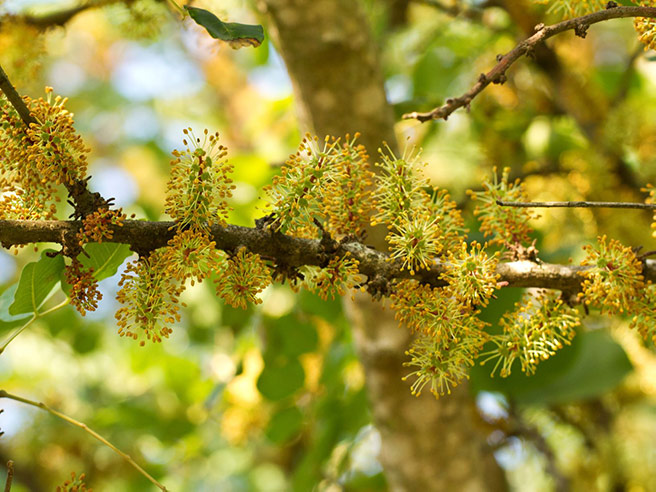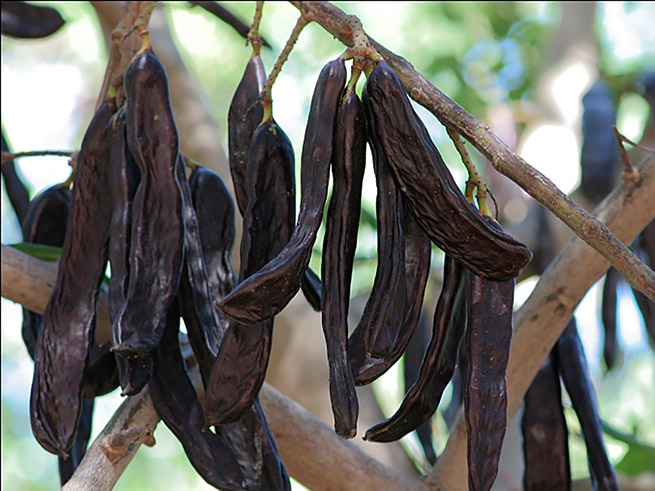



It’s early August and in southern Europe that means heat, sunshine and beaches, as well as harvest time! So today we will be talking about harvesting what is one of the region’s most emblematic fruits – carob; or as they say down here, carob picking!
Carob, almond and fig trees are the components of the age-old dryland scenery that is so characteristic of the Mediterranean region. They form a major part of the scenic identity and heritage of Portugal’s agricultural production.
Although carob trees can be found throughout Portugal, it is in the Algarve that their cultural, sentimental and heritage value is strongest.
There is no precise date to mark the start of carob harvesting, which is done by using long poles to beat the tree branches and loosen the pods. However, towards the end of July, you are likely to see people out all over the region with their poles. The sound of the poles hitting the tree branches is as typical of the Mediterranean region as carob itself!
There is a specific name in Portuguese for this type of harvesting: it is called “varejo” from the word “vara”, meaning “pole”.
This is a very old process and it is very hard work. The poles are made of wood or cane. They are used to shake the branches to loosen the fruit, which then falls off on to canvas or cloth sheets spread out on the ground beneath the trees.
Carob harvesting begins early in the morning, when the summer heat is not as intense, and it goes on all day long! In the past, it was the men’s job to knock the pods off the trees and the women were responsible for bagging them in linen or sackcloth sacks, sometimes weighing as much as 50 kg! Nowadays, thanks to mechanisation and automation, the process is much easier and less time-consuming.
At lunchtime, the harvesters stop for a break in the shade of the carob trees. For many years, their meal typically consisted of bread and olives with fried fish or bacon.
At the end of the long day’s work, the carob pods are transported to a warehouse where the bags are stored, ready for sale. In the past, the loads were carried by donkeys and mules, but farm tractors now do this job.
The carob pods are sold to traders in sacks weighing 15 kg, a unit of weight that is called “arroba” in Portuguese. After the seeds have been taken out, the pods are dried and roasted to be ground and turned into carob flour.
In the olden days, Saint Michael’s feast day, on the 29th of September, was considered the day that officially marked the end of the “varejo” season in the dryland orchards. Nowadays, harvesting is done mechanically and the end of the harvest depends on the climatic and environmental characteristics of the carob trees and the soil around them.
Sometimes forgotten about, carob is once again coming to the fore in the region’s economy. According to FAO data, Portugal is currently the world’s biggest producer of carob. And in 2013, when the “Mediterranean Diet” was included by UNESCO on the list of intangible cultural heritage, carob harvesting was one of the traditions highlighted.

